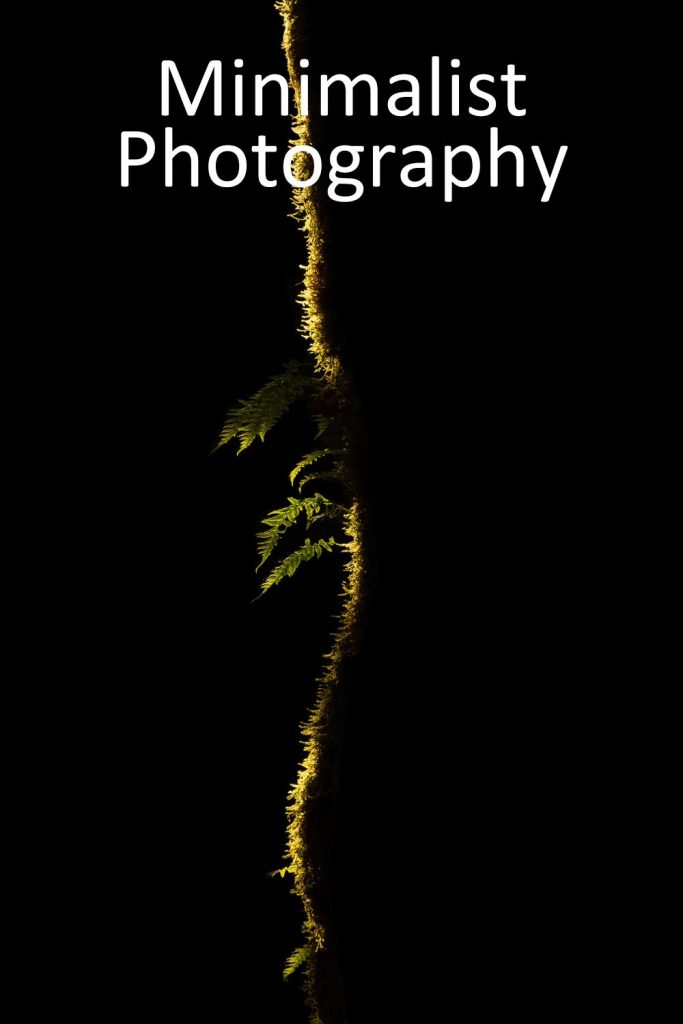
There’s something powerful about simplicity. In a world overwhelmed by noise (both visual and mental) minimalist photography offers a quiet, intentional pause.
For landscape photographers, minimalism isn’t just a stylistic choice; it’s a mindset that invites clarity, space, and stillness into the frame.
In this post, we’ll define minimalism, explore how and why it works in landscape photography, and walk through the techniques, from long exposures to black-and-white conversions, that help distill a scene to its essence.
Whether you’re just starting or refining your visual voice, minimalism can help you say more with less.
I receive a small commission from links in this post, thank you for your support
Define Minimalism in Photography
Minimalism in photography is about stripping a scene to its essentials capturing only what’s necessary while embracing the space around it. At its core: less is more.
Whether it’s an empty beach at dawn or a lone tree standing in a misty field, minimalism celebrates simplicity, focusing on what you exclude as much as what you include.
Minimalist landscape photography often relies on clean horizons, abundant negative space, and a singular subject that feels purposeful. It’s a style that invites quiet contemplation and emotional clarity, inviting viewers to slow down and breathe.
📸Learn for free!
➡️ FREE Wallpapers and Guides
➡️ DISCOUNTS on future Tours & Tutorials
➡️ TIPS for improving Your photography

I don’t share your Info with anyone. You can unsubscribe at anytime.
Minimalist Photography: Why It Works (and Where Others Miss the Mark)
Most minimalist guides you find online cover basics like negative space and long exposures, but few offer practical workflow tips or delve into gear selection, editing nuances, or focal length strategies. This post bridges that gap by blending creative mindset, camera technique, and editing essentials.
Tools & Techniques to Elevate Your Minimalist Shots
Composition and Framing are the key concepts behind excellent, thought and emotion provoking minimalist shots.
In this Guide, we’ll unpack:
- Framing strategies to exclude distractions
- Minimalist Photography and Black and White Conversions
- Optimal focal lengths and aperture choices
- Why long exposures elevate minimal photography
- How to plan, shoot, and edit minimalist landscape images that resonate
Minimalism Photography
In minimalist photography, chance plays a role however but planning is key. Scan for a strong silhouette, line, or shape then ask: what can I remove? What negatives space enhances the subject’s impact?
How do I make my Photos look Minimalist: Framing Strategies
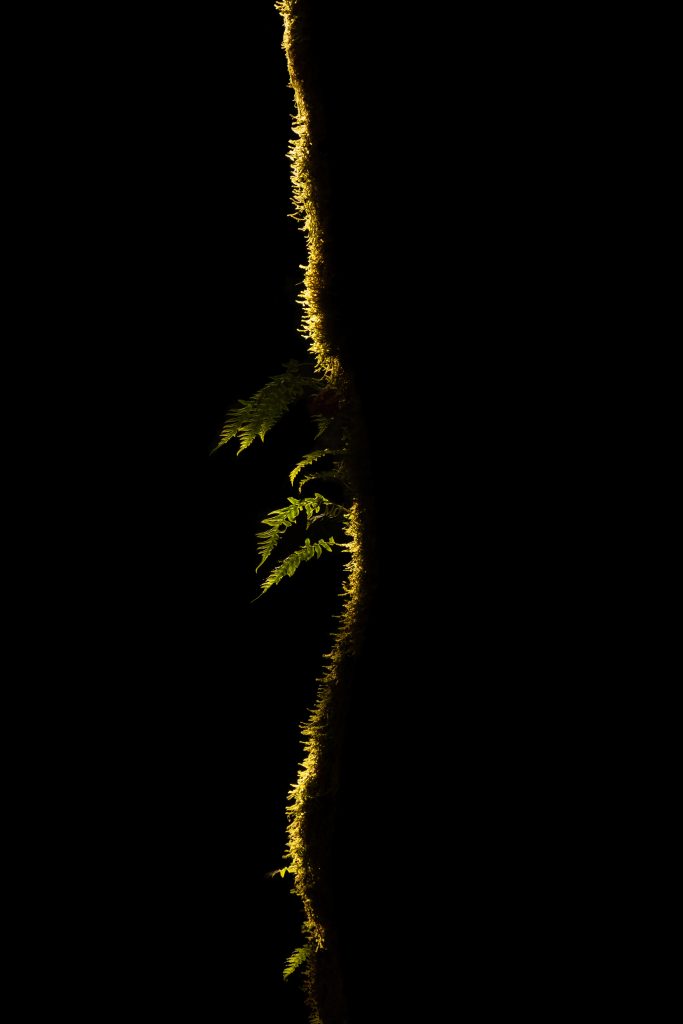
Simplify: Zero in on a single subject; lone rock, horizon line, or tree.
This side lit image of a mossy tree was taken so as to exclude the busy background of the forest.
The impact of this sliver of light would have been greatly reduced by including every tree in the background.
Additional post production of darkening the background completely steers the viewer’s eye to the soft silhouette of the tree and ferns.

Exclude distractions: Watch for clutter, branches, people, signs, and leave them out…or edit them out in post production.
Using a shallow depth of field, the decaying forest behind our subject is made to be less distracting. Further vignetting in post production assists in fading the decaying forest into the background.

Invest in negative space: Large overlapping areas of sky, water, or snow shift emphasis to your subject.

Use Nature to Isolate: Soft mist, side lighting, or fog helps blur out background noise.
It creates a focal point that steers your viewers eye towards the subject of your image.
This image taken at Lake in the Woods in Oregon demonstrates the combined use of shallow depth of field and mist to isolate the subject and guide the viewer.
Minimalism Photos Examples
A visual showcase will help you see both simplicity and space in action.





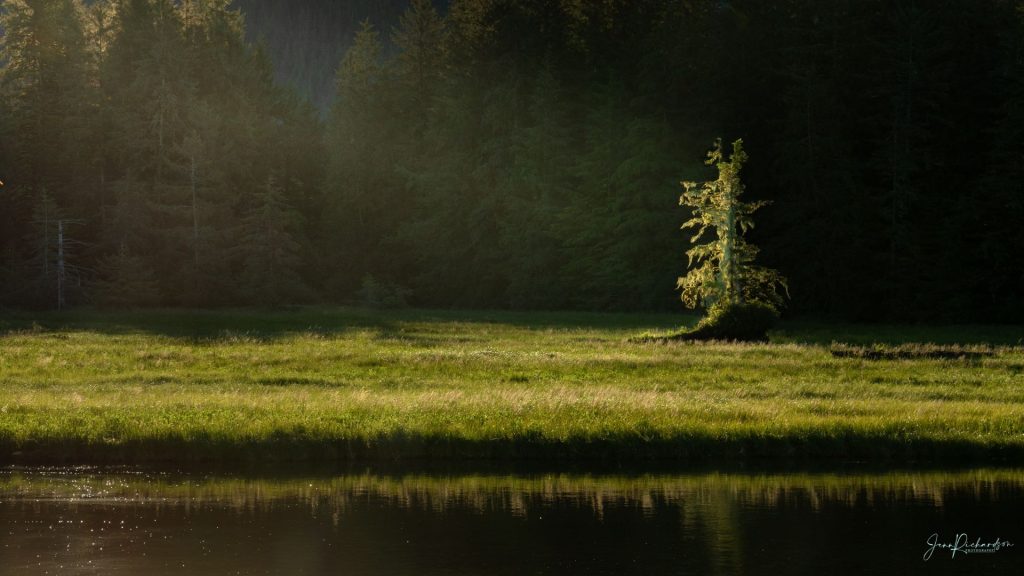














Minimalism Black and White
Converting minimalist landscapes to monochrome is a powerful way to strip away distractions and emphasize composition, contrast, and form. Minimalist black-and-white images direct viewer attention to structure, shadow, and tone rather than color which is perfect for powerful, clean visuals.
High Contrast Black and White
High-contrast black and white accentuates stark shapes, for example a snow-covered rock against dark, smooth water.
When you remove color from an image, what’s left has to do the heavy lifting: light, shadow, texture, and shape. High-contrast black and white photography thrives on this idea, especially in minimalist compositions where every element is deliberate.
Think of a lone, snow-dusted boulder surrounded by a velvety, dark lake; it’s the kind of visual tension that stops a viewer in their tracks. The bright whites and deep blacks push the eye exactly where you want it to go, turning ordinary elements into dramatic statements. It’s a powerful way to emphasize isolation, structure, and strength in a scene without the distraction of color.
Low-contrast Tones
On the flip side, low-contrast monochrome images are all about mood and subtlety. These are the photographs that feel like a quiet exhale; soft grays melting into one another, like fog over rolling hills or a shoreline dissolving into the sky. With minimal tonal variation, these scenes speak more about emotion than form.
They’re perfect for conveying introspection or the quiet beauty of an early morning when the world feels still. In minimalist photography, this approach allows the viewer to experience the atmosphere as much as the subject, inviting a slow, contemplative gaze rather than a punch of visual impact.
Minimalism Landscape Photography: Monochrome
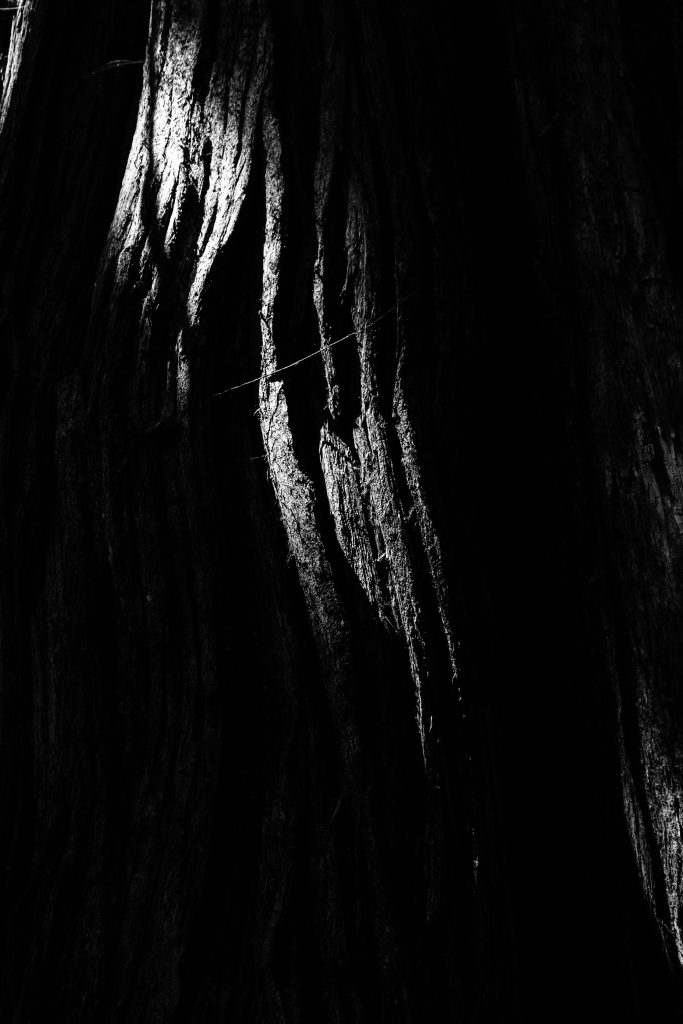
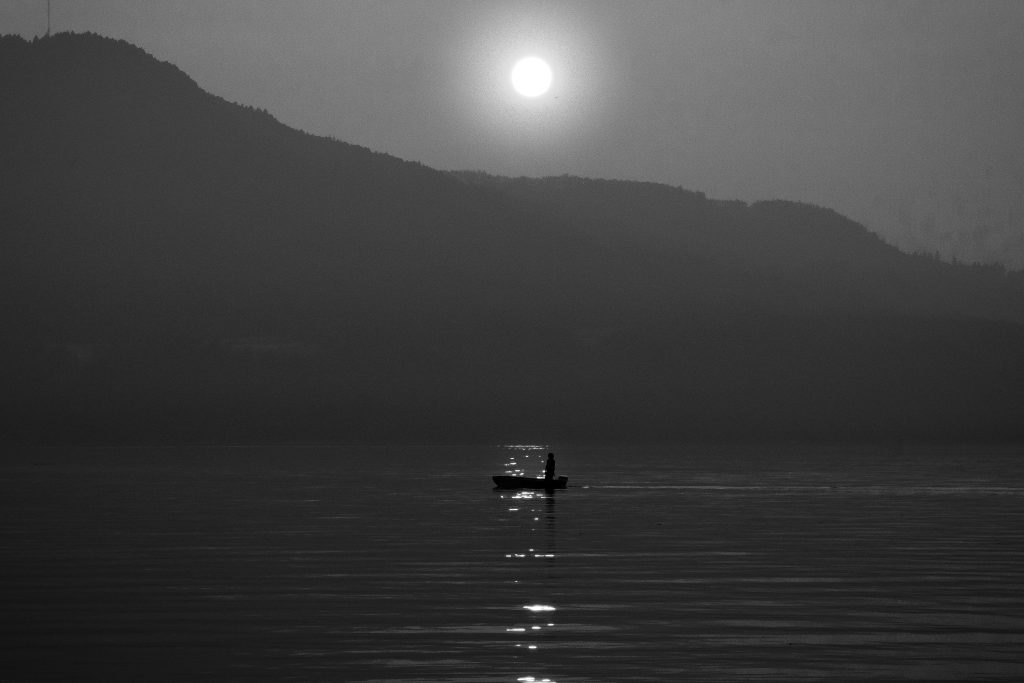
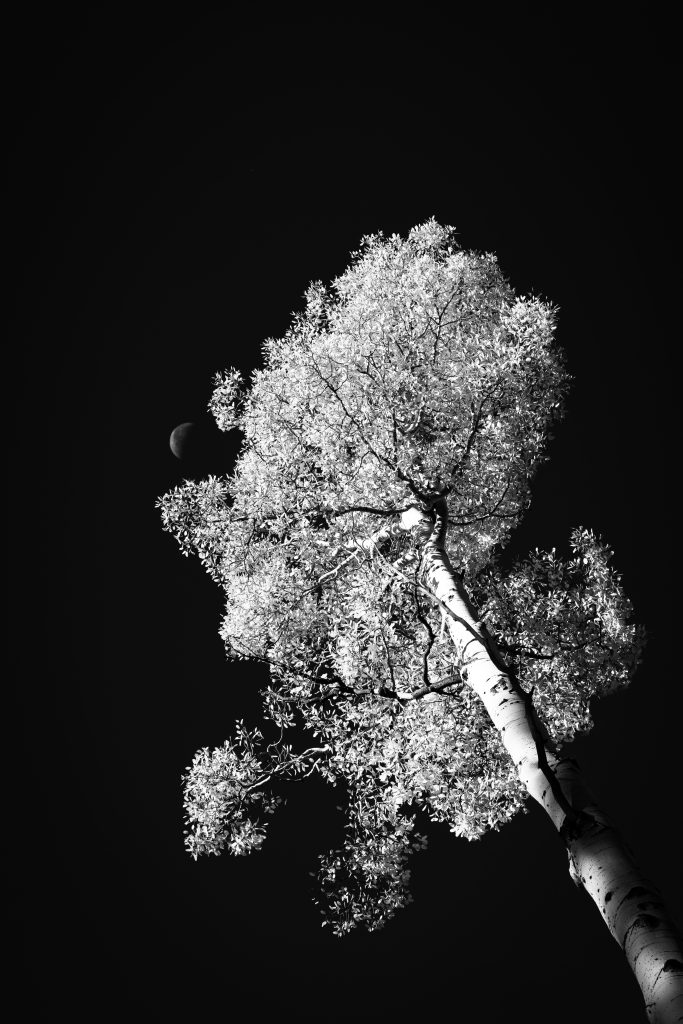
What is the Best Focal Length for Minimalist Photography?
Landscape minimalism thrives on lens choice. To emphasize negative space, think about using a wide angle lens, starting with 24 – 35mm and going wider if needed.
Wide-angle (24–35mm) captures vast negative space and horizon lines which is great for sky-water compositions, grand vistas, wide scenes.
Short telephoto (50–85mm) isolates subjects from foreground clutter and compresses the scene; ideal for trees or mountains against simplified backgrounds.
Using a mid or loner telephoto also isolates your subjects by removing the surrounding distractions.
You can shoot wide open with your aperture (f/1.4, 2.8, 3.5, etc.) to isolate the subject, introduce depth, and balance your scene.
Work with your composition, not the lens alone, to craft minimal images with impact.
Long Exposures to elevate Your Minimalism
Long exposures (5+ seconds) smooth textures such as water, clouds, and people to create emptiness.
Use a sturdy tripod and strong ND filters of at least 10 stops. Daylight I find I may need upwards of 16 stops. Or I will shoot in low light conditions to make my in the field and post processing workflow simpler.
As The School of Photography notes, a 120-second exposure flattens complex textures into minimalist elegance.
**If your camera has multiple exposures in camera, you can take a number of shots (Canon R5 does 9 shots) at set intervals up to a specific interval. The R5 then blends the exposures together in camera and the output is a long exposure done in daylight with 0 filters.
Minimalist Photography Ideas

Solo tree on a hillside: Use a telephoto lens and wide aperture (f/2.8–f/5.6) to blur the background.
Misty conditions can also obscure the foreground an background and increasing shadow and adding a vignette in post processing will accentuate your subject.

Botanicals: Use focal length and shallow depth of field to isolate
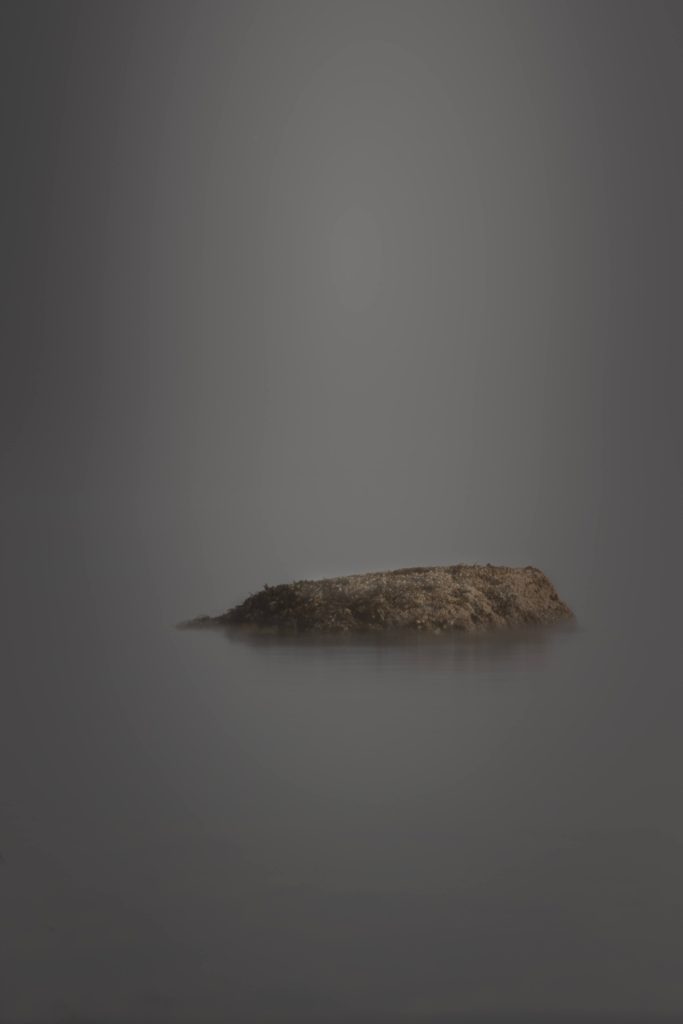
Rock in calm water: Try long exposures with a 10-stop or greater ND Filter for glass-like smooth water.

Astrophotography: Capture different celestial bodies such as the moon, constellations, etc., without any foreground.
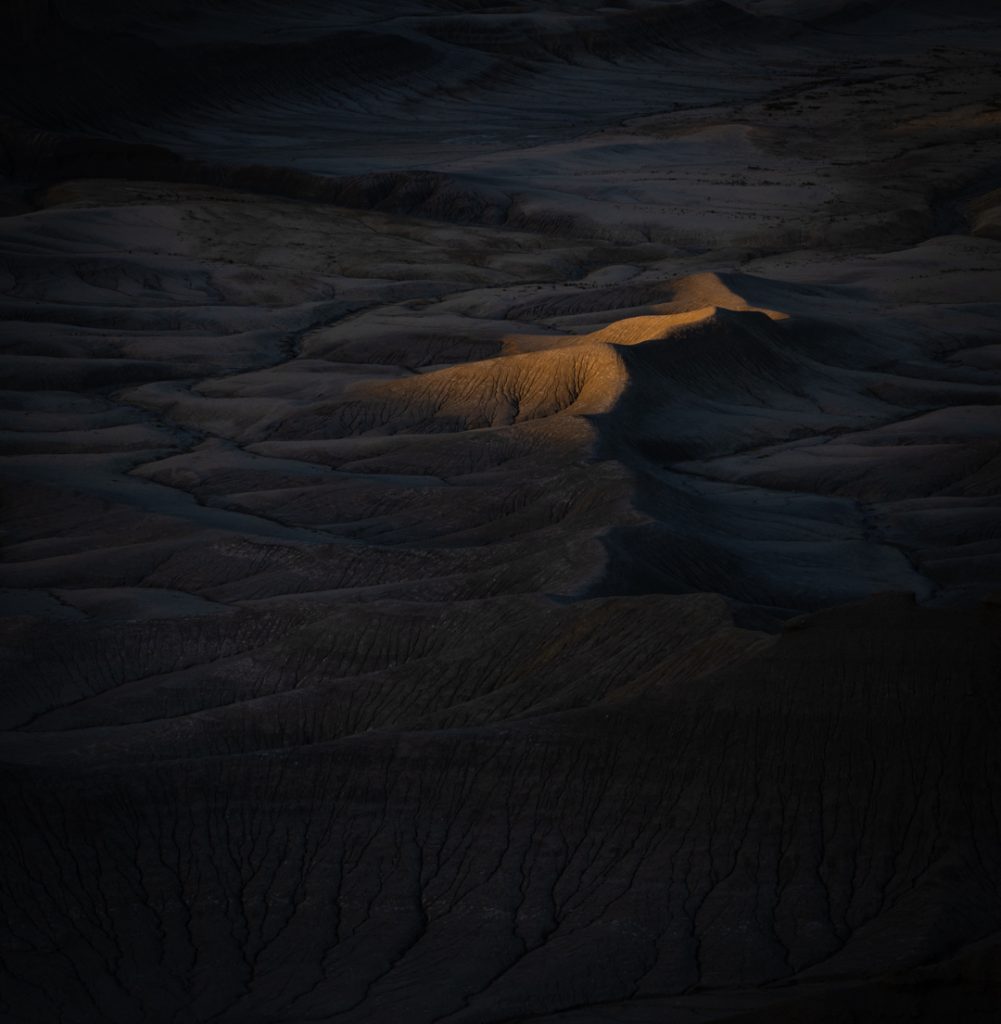
Desert dunes: Use high vantage and wide angle for negative space and soft tones. Shadows/darkness should be used to your advantage to isolate and highlight your subject.
How do I make my photos look Minimalist?
By asking yourself with each shot: Is this essential? If it’s not; remove it from your frame. Use clear backgrounds, flat surfaces, or fog to simplify. Walk around your subject: sometimes minimalism comes from choosing the right angle more than the subject itself.
What is a Minimalist in Photography?
A minimalist photographer is someone who seeks simplicity, who composes with intention, looking for calm, clarity, and shape. It’s not just a style, it’s a creative discipline that challenges you to say more with less.
Editing Techniques for Minimalism Landscape Photography
Specific post processing techniques can be used to emphasize your minimalist photography. This is especially useful for when you have a vision but can’t get everything perfect in camera.
To remove distractions, you can crop or use generative AI to remove items, people, or anything you need to remove from your scene.
Vignetting is another tool I use to de-emphasize elements at the front and edges of a scene and to lead the viewers eye to your subject. Create a preset with your preferred level of vignetting for faster workflow. Use in conjunction with a brightening radial mask on your image to enhance the focal point even more.
Converting your images to black and white and refining your monochrome look with tonal curve adjustments is a technique commonly used. Envisioning the monochrome in the field will lead to better results in the digital dark room. Texture and clarity adjustments should be used to enhance your image.
Using color theory to enhance your subject with the various color, hue, saturation, color wheel and point color editing options in Lightroom. You can increase blue tones in the foreground and add yellow tones to your subject. This will lead your viewers eye to the main focal point of the scene while camouflaging the distractions.
Enhance Vibrance and/or saturation (or use point color, etc.) for bolder more dramatic colors for your focal point and mute colors in other parts of the scene.
Gear List for Minimalist Landscape Photography
Here is a base list of gear I would use and that changes depending on the scenes or conditions.
- Sturdy Tripod
- ND Filters
- Polarizer
- Remote Trigger (or use in Camera timer)
- Wide Angle (Rokinon 14mm)
- Zoom (Canon 24-105mm)
- Long Range Zoom (100-500mm)
Location scouting tips
You can discover minimalism at most of your favorite spots. I also suggest finding minimal environments: empty beaches, foggy mornings, desert flats; underscoring that minimalism isn’t only about the scene but the time and conditions.
Inspiration from Masters
You can’t speak on minimalist landscape photography if you don’t highlight Michael Kenna’s serene landscapes. You have to also check out Mikko Lagerstedt’s work which uses solitude, and different weather to create soulful imagery.
Common Mistakes to Look For in Minimalist Photography
Over-cluttering, ignoring light, distracting focal points; these are the three main culprits that may distract from a minimalist photo. Changing your framing and composition first and foremost will fix most issues you may be having.
If you approach a scene with minimalism and your end vision in mind, you can create your image with post processing as part of the process.
Light (and the absence of light) is integral to any photo; that is why the word photography means drawing with light. You must use light to accent your subject, and lead your viewers eye in your intended direction.
Conclusion Minimalist Photography
Minimalist landscape photography demands more discipline than maximalist styles. Framing, focal length, long exposures, and editing become your tools for saying more with less. By removing unnecessary elements and embracing negative space, you focus attention on form, light, and emotion.
Whether you’re working in color, black-and-white, or long exposure, minimalism invites calm, clarity, and deeper connection; not only to your subject but your own creative vision. As you refine your craft, remember: minimalism isn’t about fewer photos; it’s about richer, more intentional visual storytelling.
📸Learn for free!
➡️ FREE Wallpapers and Guides
➡️ DISCOUNTS on future Tours & Tutorials
➡️ TIPS for improving Your photography

I don’t share your Info with anyone. You can unsubscribe at anytime.
- Define Minimalism in Photography
- Minimalist Photography: Why It Works (and Where Others Miss the Mark)
- Tools & Techniques to Elevate Your Minimalist Shots
- Minimalism Photography
- How do I make my Photos look Minimalist: Framing Strategies
- Minimalism Photos Examples
- Minimalism Black and White
- Minimalism Landscape Photography: Monochrome
- What is the Best Focal Length for Minimalist Photography?
- Long Exposures to elevate Your Minimalism
- Minimalist Photography Ideas
- How do I make my photos look Minimalist?
- What is a Minimalist in Photography?
- Editing Techniques for Minimalism Landscape Photography
- Gear List for Minimalist Landscape Photography
- Location scouting tips
- Inspiration from Masters
- Common Mistakes to Look For in Minimalist Photography
- Conclusion Minimalist Photography
- References
- 📸Learn for free!
- 📸Learn for free!
References
- The School of Photography: minimalist long exposures guide
- Wikipedia: “Minimalist photography” definition/history
- Adobe: minimalist basics and B&W techniques
- Digital Photography School: deep minimalist guide





